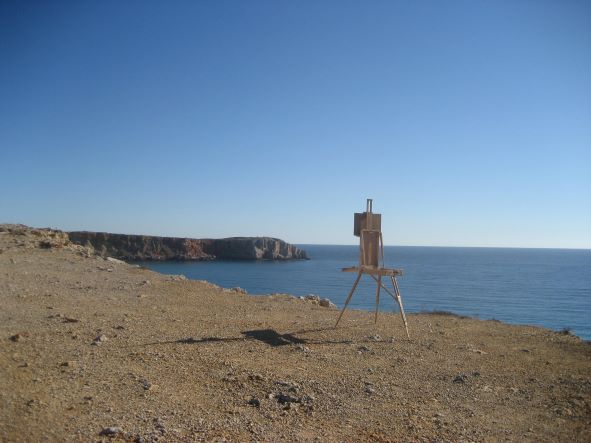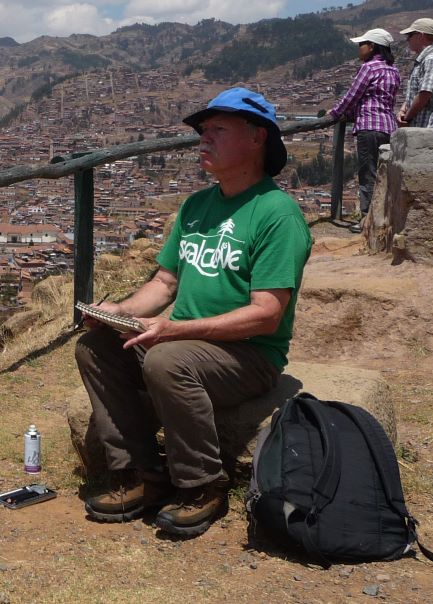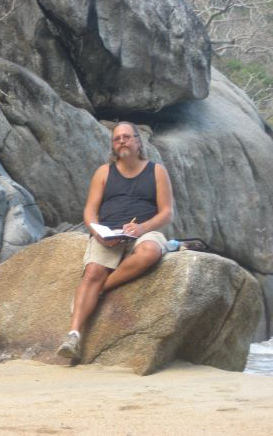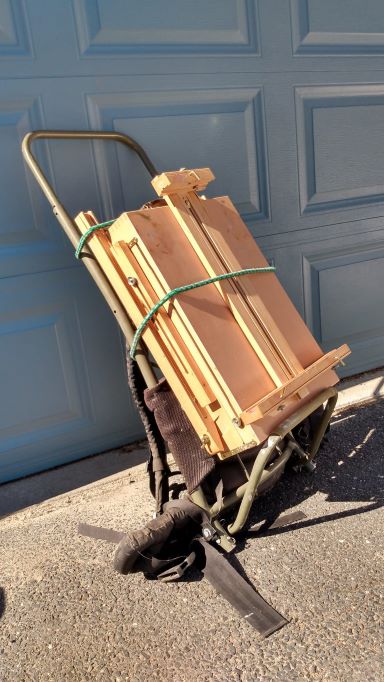
Getting your kit together
Before you head out to paint (or draw) in the world, you need to put together a painting/drawing outfit that works for you. A lot depends on the medium you choose; sketching with pad and pencil does not require much effort or planning. A lot depends on whether you are just trying this activity on for size, or are resolved to make it a regular part of your working life. The choice between painting and drawing is critical in determining what equipment you should have. A lot also depends on your mode of transportation to the point where you will set up. Monet’s barge solved lots of problems!


I am primarily a painter in oils, though I will work in pencil when bringing my painting outfit is impractical. When I travel abroad with a tour, I put together a small knapsack with everything in it: pad, pencils, fixative, sharpener, erasers, and painting stool. I used a British fisherman’s stool, which folds into a flat rectangle about 6” x 8”, however I would have no idea where to get one today.


However, where possible, at home or abroad, I travel by car with my French Easel and panels, perhaps with a final hike to my chosen painting spot. My strong recommendation for anyone who is serious about plein air painting is to acquire a French paintbox/easel. They are compact, efficient and easily transportable. There is a small version which works well for watercolor artists, and a full size version for painters in oil and acrylics. It organizes and stores all your painting materials, gives you a flexible easel for sitting or standing, adjustable for uneven terrain, and triples as a carrier for wet paintings. There are two storage compartments below the paint drawer, one for clean brushes the other for used ones. It comes with a wooden palette fitted to the size of the box.
I have worked out two upgrades to increase its portability. The first is for air travel: I repack the easel in its original Styrofoam and box, and fashion a handle for ease of trucking it through the airport. The second is a packframe to which the box can be attached by bungee cords, allowing me to hike with it on my shoulders. I have painted as much as a mile from my parking spot.


I used to buy “good quality” French easels at $250 plus. My first box lasted me many years, so that was very satisfactory. However all later boxes began to break down in various ways within a year, so in recent years I have treated the box as a consumable item. I can buy a functional French easel for $50 at Ocean State Job lot when they are available; I generally buy two at a time.
You will need a surface to paint on. I have nothing against canvas as a painting surface, but would recommend against the inexpensive canvas boards sold to students. At core they are cardboard, and begin deteriorating immediately. My strong choice is to paint on prepared hardboard panels. They are inexpensive (a 4’ x 8’ sheet of hardboard will generate 20-30 panels and costs about $10), very durable and easily transported. A variety of shapes and sizes lives in the back of my car under a blanket. In my next post I’ll explain how I process them.
A piece of equipment that I find essential, which is often forgotten, is a visor or other sunshade. It isn’t possible to see clearly if your eyes are not shaded, not only from direct sun but also from a bright sky. An extra piece I carry around in the car: a 5 lb rock which I can use to weigh down the back of the easel in a wind.
You are ready to go! Find a spot, find a group, or perhaps even a workshop. You are out in search of the picturesque! Devil take the hindmost.